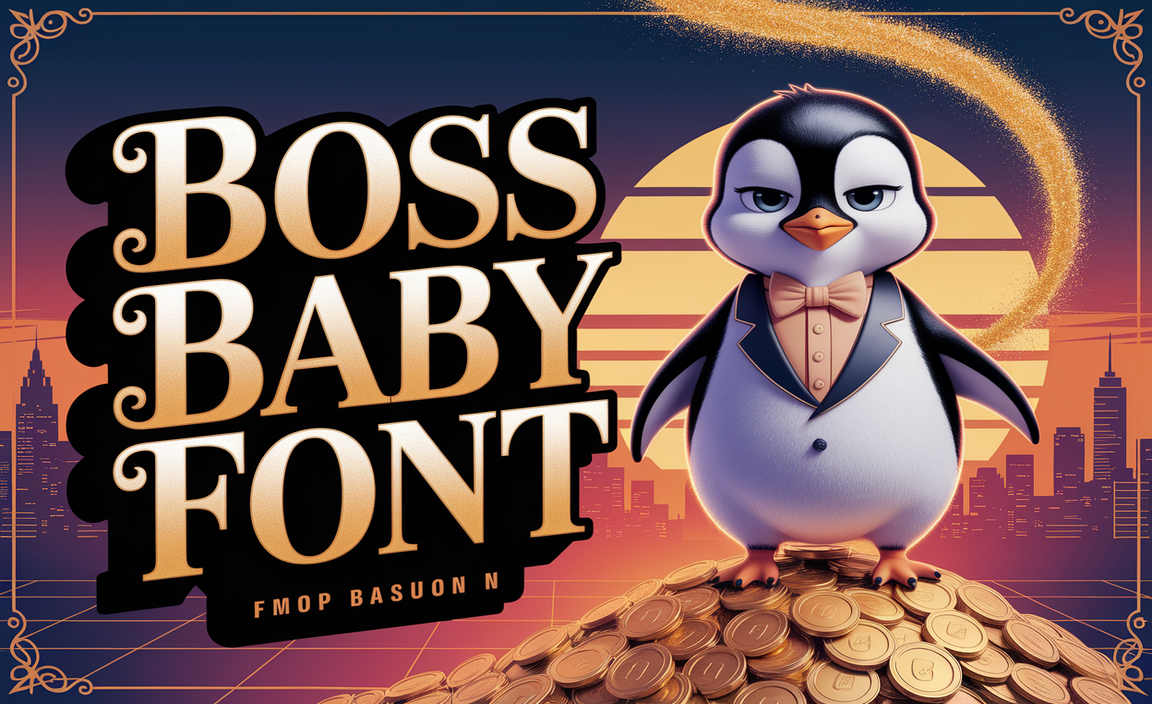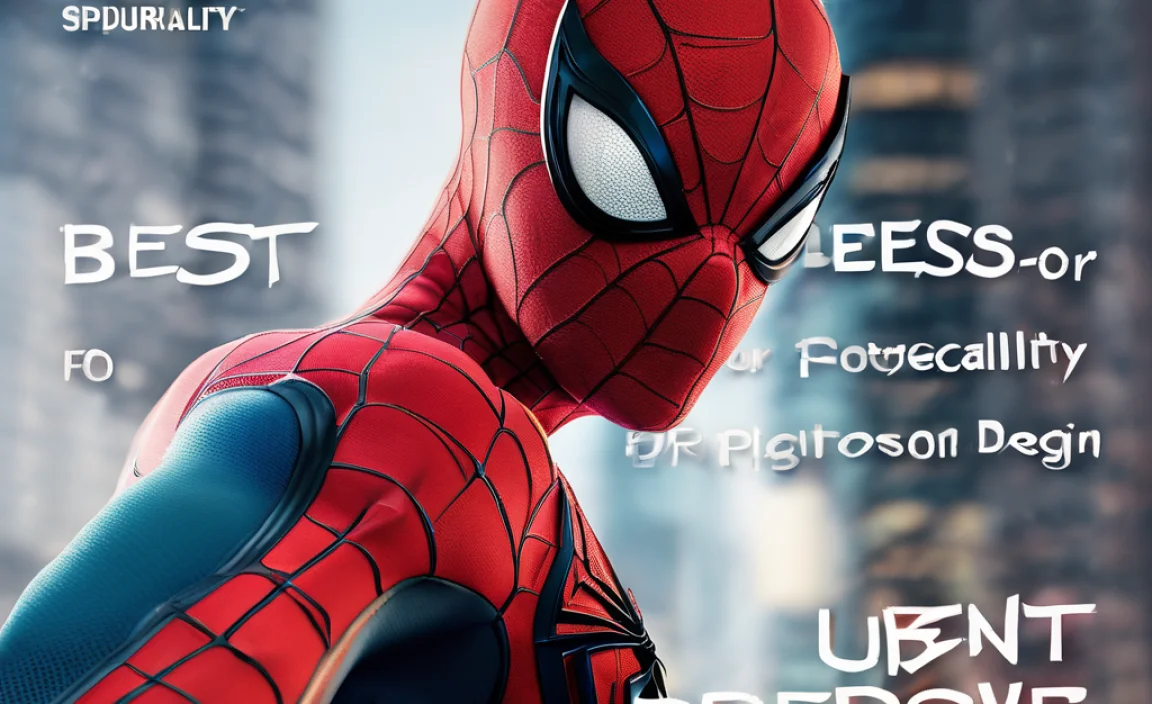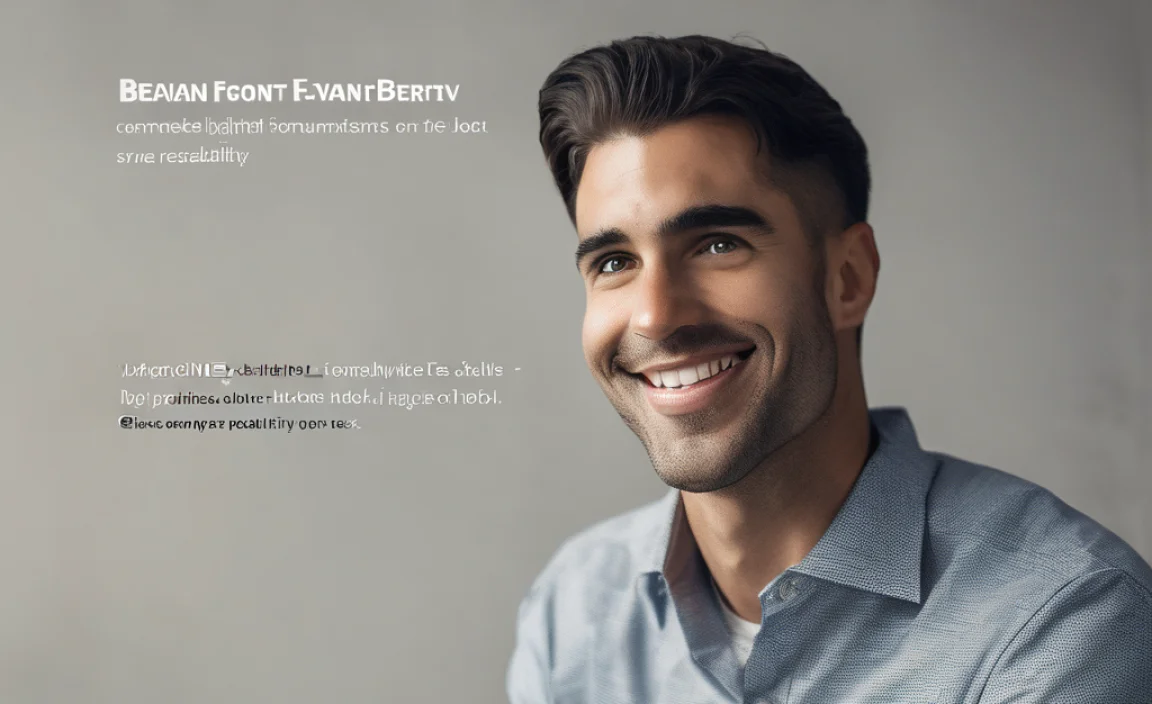Bolded Quick Summary: Old Standard TT is a classic serif font, perfect for adding a timeless, elegant, and highly readable feel to your designs. It excels in both print and digital, offering a robust character set for various creative projects. Discover how to use it effectively for stunning results.
Choosing the right font can feel like a huge decision for any project. Sometimes, the simplest fonts bring the most impact. Old Standard TT is one of those fonts. It has a beautiful, classic look that works for many different uses. If you’ve ever felt overwhelmed by endless font options or struggled to find something that looks both professional and welcoming, you’re in the right place! We’re going to break down the Old Standard TT font, making it super easy to understand and use. Get ready to add a touch of timeless elegance to your next design!
What is Old Standard TT Font?
Old Standard TT is a serif typeface. This means it has small decorative strokes, called serifs, attached to the end of the main strokes of letters. Think of the little “feet” on the bottom of an ‘A’ or ‘T’. These serifs give the font a classic, traditional, and often more formal appearance compared to sans-serif fonts (which lack these decorative strokes).
The “TT” in its name stands for TrueType, a font format developed by Apple and later adopted by Microsoft. This simply indicates its technical format, making it widely compatible with most operating systems and design software. Designed by Alexej Kryuchkov, Old Standard TT is inspired by the late 19th and early 20th-century serif typefaces. It aims to capture the warm, readable, and slightly organic feel of those older printing styles while being perfectly suited for modern digital and print applications.
Key Characteristics of Old Standard TT:
- Serif Style: It features slab serifs that are relatively sturdy, giving it a strong yet elegant presence.
- Open Counters: The enclosed or partially enclosed negative space within letters (like the ‘o’ or ‘p’) are quite open, which aids readability, especially at smaller sizes.
- Moderate Contrast: The difference between thick and thin strokes is noticeable but not extreme, contributing to its balanced and comfortable appearance.
- Humanist Influence: While a serif font, it has subtle humanist qualities, meaning it echoes the variations found in handwriting, giving it a friendly touch.
- Extensive Glyph Set: Old Standard TT is known for including a broad range of characters, including many ligatures (combined letters like ‘fi’ or ‘fl’), swashes (decorative flourishes), alternates (different forms of letters), and OpenType features. This makes it very flexible for designers.
Why Choose Old Standard TT?
There are many reasons why Old Standard TT has become a favorite for designers, writers, and businesses. Its timeless appeal means it rarely goes out of style. It offers a sophisticated yet approachable feel that can elevate many types of projects.
Here are some of the top benefits:
- Timeless Elegance: It looks classic and sophisticated, never feeling dated.
- Excellent Readability: The open shapes and balanced strokes make it very easy to read, even in long blocks of text. This is crucial for articles, books, and websites.
- Versatile Applications: It performs well in various contexts, from formal invitations to blog posts, branding materials, and print publications.
- Professional Appearance: It lends an air of credibility and quality to any piece of design work.
- Rich Typographic Features: The extensive OpenType features allow for detailed customization, adding unique flair and professional polish.
Where to Use Old Standard TT
Old Standard TT is incredibly versatile. Its blend of classic style and modern readability makes it suitable for a wide array of design needs. Here are some of the ideal places to use this wonderful font:
Print Design
Old Standard TT shines in print. Its robust nature and clear legibility make it perfect for:
- Books and Ebooks: Its ability to render long passages of text comfortably makes it a top choice for novels, non-fiction, and academic works.
- Magazines and Newspapers: It adds a touch of class to articles and editorial content, enhancing the reading experience.
- Brochures and Flyers: Provides a professional and trustworthy look for marketing materials.
- Business Cards and Stationery: Creates a polished and memorable first impression for your brand.
- Invitations and Certificates: Its inherent elegance makes it ideal for formal documents and celebratory items.
Web Design
While serifs can sometimes be tricky on screens, Old Standard TT is designed to be quite legible online. It’s excellent for:
- Blog Posts and Articles: Improves the readability of long-form content, encouraging readers to stay engaged.
- Website Body Text: When used correctly (with appropriate sizing and line spacing), it can make your website content a pleasure to read.
- Branding and Logos: Can convey a sense of heritage, trust, or artisanal quality for businesses.
- Headlines and Titles: Offers a distinguished look for important callouts and section headers.
- Digital Publications: Ideal for online magazines and journals aiming for a sophisticated aesthetic.
Branding and Identity
For businesses looking to project an image of tradition, authority, or artisanal craftsmanship, Old Standard TT is a fantastic option for:
- Law Firms: Conveys trustworthiness and a strong professional heritage.
- Academic Institutions: Adds a sense of prestige and scholarly tradition.
- Publishing Houses: Reinforces a commitment to literature and quality printing.
- Artisanal Brands: Projects an image of quality, handmade goods, and timeless appeal.
- Luxury Goods: Can add a touch of refined elegance suitable for high-end products.
How to Use Old Standard TT Effectively
Like any font, Old Standard TT has its strengths that can be amplified with smart usage. Here are some proven tips to make this typeface sing in your designs.
1. Master Readability Settings
Even the best fonts can fall flat with poor settings. For Old Standard TT, pay attention to:
- Size: For body text online, aim for at least 16px. In print, 10-12pt is usually a good starting point.
- Line Height (Leading): This is the space between lines of text. For Old Standard TT, a line height of 1.4 to 1.6 times the font size is generally comfortable for reading.
- Line Length: Keep your lines of text to a manageable length. Around 50-75 characters per line is ideal for optimal reading flow.
- Letter Spacing (Tracking) and Kerning: While Old Standard TT has good default spacing, you might adjust it slightly for headlines or specific letter pairs to improve visual harmony.
2. Leverage OpenType Features
Old Standard TT is packed with OpenType features that unlock its full potential. Explore these in your design software (like Adobe InDesign or Illustrator):
- Ligatures: These are characters that merge two or more letters. For example, ‘fi’ can become one combined character, and ‘fl’ can too. This makes text flow more smoothly and look more professional. Old Standard TT has common ligatures like `fi`, `fl`, `ff`, `ffi`, `ffl`.
- Alternate Glyphs: You can find alternative versions of certain letters that might fit your design better. For example, there might be a slightly different ‘a’ or ‘g’.
- Swashes: These are decorative strokes added to certain letters, perfect for adding a flourish to initials or short titles.
- Small Caps: Old Standard TT offers true small caps, which are often more aesthetically pleasing than simply shrinking uppercase letters.
Accessing these features usually involves a dedicated panel in your design software. For example, in Adobe InDesign, you’d find them under “Type > OpenType.”
3. Strategic Pairing with Other Fonts
For more dynamic designs, consider pairing Old Standard TT with complementary fonts. The best pairings often contrast the serif with a sans-serif font.
Good Companions for Old Standard TT:
- Modern Sans-Serifs: Fonts like Montserrat, Lato, Open Sans, or Roboto can provide a clean, contemporary balance to the classic serif. Use Old Standard TT for headings or body text and a sans-serif for the other.
- Geometric Sans-Serifs: Fonts like Futura or Poppins offer a strong, structured counterpoint.
- Slab Serifs (used sparingly): A more robust slab serif can create a bold, impactful headline when contrasted with Old Standard TT for body text.
- Subtle Scripts (for accents): If you need a touch of script, choose one that is delicate and readable, to avoid overwhelming the classical feel of Old Standard TT.
What to Avoid:
- Too Many Serif Fonts: Mixing Old Standard TT with another dominant serif font can make text look cluttered and old-fashioned in the wrong way.
- Highly Decorative Fonts: Unless for a very specific, artistic purpose, avoid pairing it with overly ornate display or script fonts for body text.
4. Use Case Examples
Let’s see how Old Standard TT might look in action:
Example 1: Blog Post
Headline: Old Standard TT (Bold, larger size, perhaps with swash alternates for the first letter)
Sub-headline: A modern sans-serif like Lato (Regular weight, smaller than headline)
Body Text: Old Standard TT (Regular weight, 16-18px, line height 1.5)
Captions/Quotes: Old Standard TT Italic or a simple sans-serif
Example 2: Wedding Invitation
Names: Old Standard TT (Large, perhaps with swash alternates or a beautiful ligature)
Details (Date, Time, Venue): Old Standard TT or a refined script font (carefully chosen for readability)
RSVP/Additional Info: Old Standard TT (Smaller, regular weight)
Example 3: Business Branding
Logo: Old Standard TT (Could be used on its own for a classic feel, or paired with a simple sans-serif for a modern mark)
Website Headlines: Old Standard TT (Bold)
Website Body Text: A highly readable sans-serif like Open Sans
Marketing Materials: A mix of Old Standard TT for headings and a clean sans-serif for informational text.
5. Performance on Different Devices
While designed for modern use, web fonts have nuances. Old Standard TT performs well because of its generous x-height (the height of lowercase letters like ‘x’) and open counters. These features help it remain clear and distinct even on lower-resolution screens. However, always test your website on various devices and screen sizes. You might find that for very small mobile screens, you need to increase the font size or line height slightly more than you would for a desktop.
For a good understanding of how web fonts are rendered and best practices, you can explore resources from typography experts and developers. For instance, understanding the principles of responsive typography is key. Websites like Google Developers offer excellent guides on typography for the web, which can help you implement fonts like Old Standard TT effectively across all devices.
Old Standard TT vs. Similar Fonts
It’s helpful to see how Old Standard TT compares to other popular serif fonts to understand its unique qualities. This is especially useful when trying to achieve a specific historical feel or a particular level of readability.
Old Standard TT vs. Times New Roman
Times New Roman is perhaps the most recognized serif font, often defaulted in many applications. While both are serifs with good readability for text, there are key differences:
- Serif Style: Times New Roman has finer, sharper serifs, giving it a more formal and somewhat more condensed appearance. Old Standard TT has bolder, more bracketed serifs, giving it a warmer, softer, and slightly more traditional “printed” feel.
- Stroke Contrast: Times New Roman has a higher contrast between thick and thin strokes, which can be elegant but sometimes harder to read in very long texts. Old Standard TT has a more moderate contrast.
- Overall Feel: Times New Roman often feels more academic, official, or journalistic. Old Standard TT leans towards literary, vintage, or artisanal.
Old Standard TT vs. Garamond
Garamond is another classic, known for its elegance and beautiful proportions, with many historical versions. How does it stack up against Old Standard TT?
- Heritage: Garamond is a much older font family, dating back to the Renaissance. Old Standard TT is a modern revival inspired by later (19th/20th century) styles.
- Serif Style: Garamond has very delicate, often sharp serifs and a strong humanist feel, closely mimicking calligraphy. Old Standard TT’s serifs are more substantial.
- Readability: Both are highly readable, but Garamond can sometimes appear smaller and more delicate, potentially requiring larger sizes for digital readability compared to Old Standard TT.
- Elegance: Both are elegant, but Garamond often conveys a more refined, historical, and artistic sophistication, while Old Standard TT offers a grounded, timeless, and robust elegance.
Old Standard TT vs. Georgia
Georgia was designed specifically for screen readability. How does it compare?
- Screen Design: Georgia was optimized for lower screen resolutions and generally looks excellent on displays. Old Standard TT also works well on screens but might require slightly more attention to implementation details.
- Serif Style: Georgia has sturdy, somewhat open serifs that are very friendly to pixels. Old Standard TT’s serifs are also sturdy but have a different, more classical construction.
- Personality: Georgia feels solid, friendly, and very dependable for digital text. Old Standard TT has a more pronounced historical and literary character.
Comparison Table
Here’s a quick look at Old Standard TT alongside popular alternatives:
| Font | Type | Key Characteristics | Best For |
|---|---|---|---|
| Old Standard TT | Serif | Timeless, strong serifs, good contrast, wide OpenType support, highly readable. | Books, articles, elegant branding, historical feel. |
| Times New Roman | Serif | High contrast, sharp serifs, condensed, widely available. | Academic papers, news articles, formal documents. |
| Garamond | Serif | Renaissance-inspired, delicate serifs, humanist forms, elegant. | Literary works, high-end branding, historical contexts. |
| Georgia | Serif | Designed for screen, sturdy serifs, high x-height, very readable. | Web body text, blogs, digital publications. |
| Merriweather | Serif | Modern, robust, optimized for screens, friendly. | Websites with long content, blogs, user interfaces. |
Where to Download Old Standard TT
Accessing Old Standard TT is generally straightforward. It’s a popular and well-supported font:
- Google Fonts: Old Standard TT is available for free through Google Fonts. This is an excellent resource for web designers as it’s easy to implement on websites. You can find it here: Google Fonts – Old Standard TT.
- Font Squirrel: Another great source for free, high-quality fonts. Font Squirrel often provides webfont kits that are easy to download and use.
- Other Font Repositories: You might also find it on various general font download sites, but always ensure you’re obtaining fonts from reputable sources to avoid licensing issues or malware.
When using fonts for commercial projects, it’s always a good practice to check the specific license associated with the font to ensure compliance.
Frequently Asked Questions About Old Standard TT
Q1: Is Old Standard TT a free font?
A: Yes, Old Standard TT is available for free, particularly through platforms like Google Fonts, which makes it accessible for both personal and commercial use under an open-license agreement.
Q2: Can I use Old Standard TT for my logo?
A:









